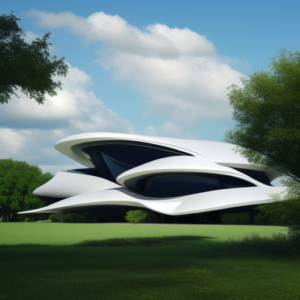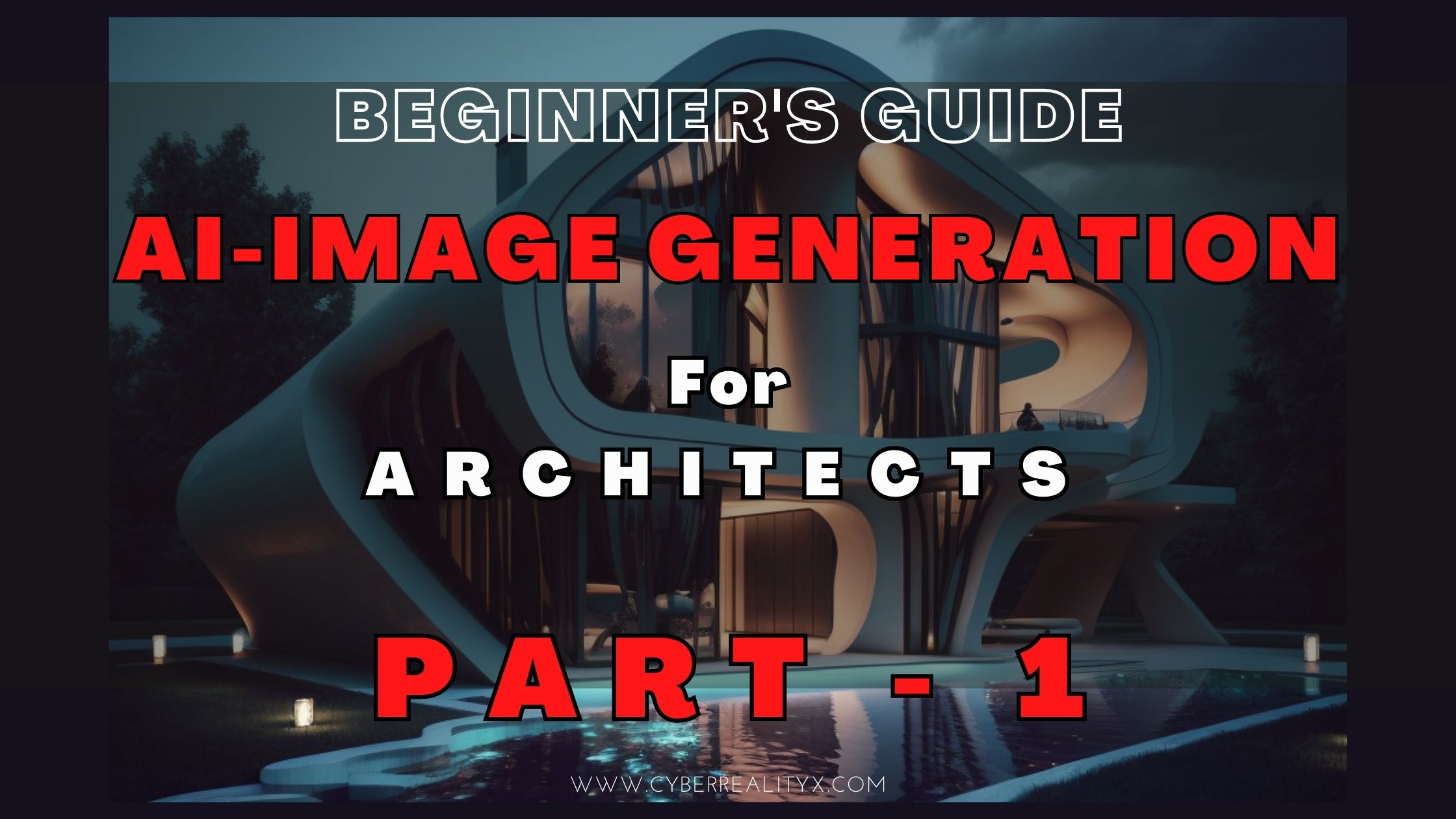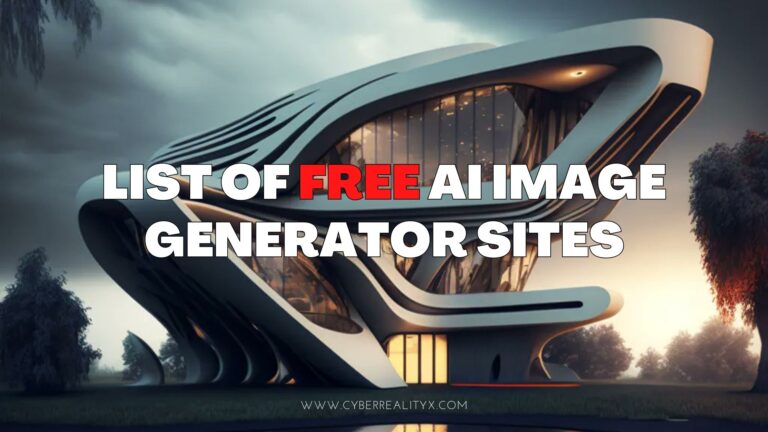Unlock the power of AI image generation for architects with this beginner’s guide! No coding experience is necessary, just a thirst for cutting-edge technology and a passion for creating stunning Architecture. Discover the potential of Stable Diffusion AI and take your designs to the next level.
In this comprehensive beginner’s guide, you’ll gain an understanding of Stable Diffusion, its capabilities, and how it can benefit your work. Plus, you’ll receive useful tips on how to use it effectively. Whether you’re an architect looking to elevate your designs or simply curious about AI image generation, this guide will equip you with the knowledge you need to get started.
What is an AI-generated image?
AI-generated images are precisely what they sound like – images created through artificial intelligence rather than human input. This groundbreaking process involves sophisticated machine learning algorithms that combine elements from millions of images to produce stunning final products.
To generate these images, users simply input text prompts into the generator. Text-to-image AI generators then analyse the inputted text and search their databases for corresponding matches. Based on this analysis, the generator creates a unique image that accurately reflects the inputted text. With this incredible technology at your disposal, the possibilities for image creation are endless.
There are many AI image-generator tools. You can find some of them in this post List of FREE AI image generator websites. In this post, I will focus on Stable diffusion.
What is Stable Diffusion?
It’s a cutting-edge, deep-learning, text-to-image model that was launched in 2022. Its primary function is to produce intricate images based on text descriptions, but it’s also capable of performing other tasks like inpainting, outpainting, and generating image-to-image translations using a text prompt as a guide. With its impressive capabilities and versatility, Stable Diffusion is quickly becoming a favourite among those in the AI image generation field.
Stable Diffusion is the result of a collaboration between start-up Stability AI, several academic researchers, and a non-profit organization.
As an AI model, Stable Diffusion is truly impressive. It allows you to generate incredible images based on simple text input. All you have to do is enter a text prompt that describes the image you want to create, and Stable Diffusion’s advanced algorithms take care of the rest.
For example, if you wanted to generate images of a house, you might use a prompt like:
“Futuristic house, Zaha Hadid style, high-realistic 4k”
 |
 |
 |
Once you’ve entered your prompt, the AI model works its magic and produces detailed images that match your input. It’s an incredible tool that has already made a significant impact in the field of AI image generation.
Why Stable Diffusion?
Now you may ask if there are similar text-to-image generation services like DALLE and MidJourney. Why Stable Diffusion? The answer is simple: Stable Diffusion offers unique advantages that make it stand out from the rest.
- It’s open-source, which means that there are plenty of free and powerful tools available to me as an enthusiast. I don’t have to spend a fortune to access this technology, which is a huge plus.
- Stable Diffusion is specifically designed to run on low-power computers. This makes it incredibly cost-effective and efficient to use. You don’t have to worry about running up a huge electricity bill to generate high-quality images from text.
- It has a wider range of capabilities and can be customised to suit your needs. For example, it can help for generating ideas, especially for architecture, final image illustration and rendering, and do some fast and efficient changes to your design concept
Overall, if you’re looking for a text-to-image, image-to-image generation service that is both powerful and affordable, Stable Diffusion is definitely worth checking out.
What kind of images Stable Diffusion can create?
There’s no end to what you can achieve! Here are some examples of the amazing images you can generate using Stable Diffusion.
Architecture
Interior design
Landscape
Now that we’ve covered the “what” and “why,” it’s time to dive into the exciting “how” of generating images with Stable Diffusion!
How to get started with AI image generation for architects?
In general, there are two ways to get into AI image generation for architects, designers or anyone interested in this technology
- Using online Cloud-based Image generator tools – Free or prepaid
- Using free open-source models
Online Cloud-based Image generator tools
If you’re new to image generation, I suggest starting with a free online generator. Simply select one of the sites from the list, and you are good to go in no time. You can try Text-to-Image generation or Image-to-image generator.
Set up your own Image generator using open-source tools
As someone who has explored image generation tools, I can tell you that free online generators have their downsides, primarily limited functionality, especially if you want to use it to explore different design decisions or made some changes to an existing design.
Anyway, if you find yourself wanting more advanced features, I recommend trying a Graphical User Interface (GUI) like AUTOMATIC1111. It’s a powerful and open-source tool that can take your image generation process to the next level. If you’re interested, there are two methods for using Automatic1111
- Set it up on a cloud server – You can check out the Quick Start Guide for instructions.
- Set it up locally (offline) on your computer. This works if you have a decent NVIDIA GPU with at least 4GB VRAM- Check out the installation guides for Windows and Mac to get started.
What is the advantage of using an open-source tool like Automatic1111?
- A wide variety of tools/functionalities to choose from.
- Advanced prompting techniques to help generate more specific and accurate images.
- Image-to-image generation, allows you to create images based on input images.
- Inpainting functionality to regenerate small parts of an image.
- Image editing by providing instructions to the tool.
- Train your own AI model to follow your architectural style and technique.
With these powerful features at your disposal, the possibilities for creating stunning AI-generated images are virtually endless.
Summary
In the post, I provided advice for getting started with the AI-based image generation tool for architects. I recommended starting with free online generators and then moving on to more advanced tools like AUTOMATIC1111, which can be run on a cloud server or on your PC if you have a decent NVIDIA GPU. I also highlighted some of the key features and capabilities of these tools, such as advanced prompting techniques and image-to-image generation, which offer virtually endless possibilities for creating stunning AI-generated images. Overall, these tools are a great way to explore the creative potential of the AI-image generator and push the boundaries of what’s possible with digital art in architecture.
What to do?
- Subscribe to our Newsletter.
- Follow our pages on social media Facebook, Twitter, Instagram and LinkedIn
- Leave us a comment
- For more information, Contact Us.



